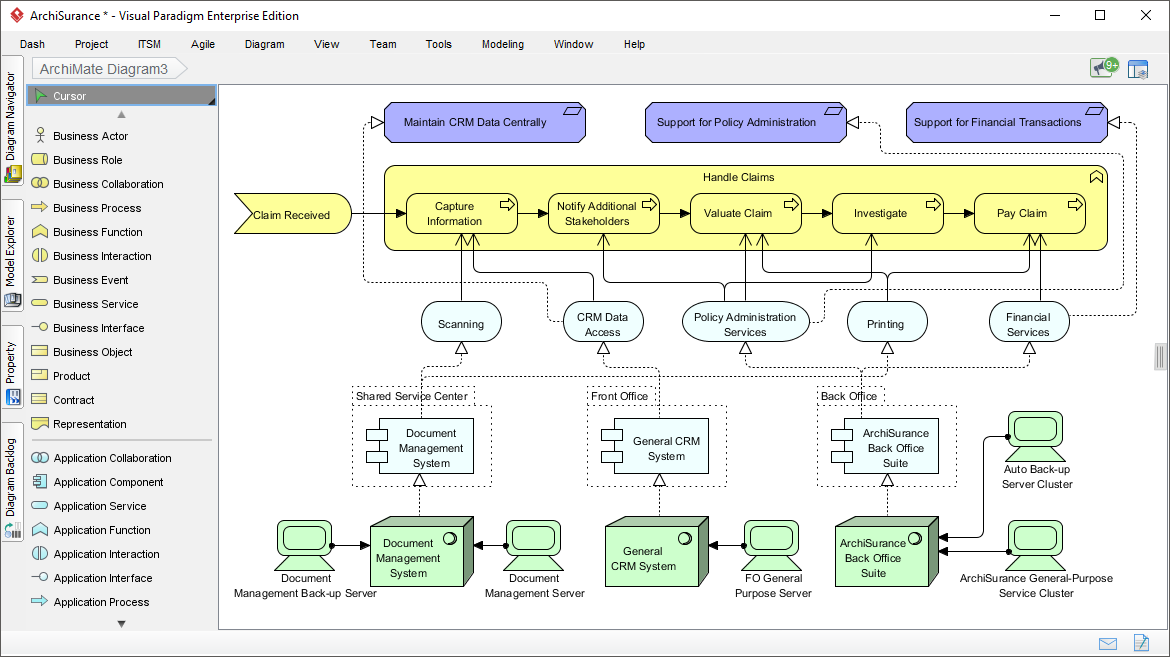What’s New in ArchiMate 3.2: Enhancing Enterprise Architecture
In the dynamic landscape of enterprise architecture (EA), staying up-to-date with the latest standards and frameworks is crucial. ArchiMate, an open and independent modeling language, plays a pivotal role in describing, analyzing, and visualizing architecture across business domains. Let’s explore what’s new in the latest version, ArchiMate 3.0-3.2, and how it empowers organizations to communicate and design their architectures effectively.

1. The Essence of ArchiMate:
-
ArchiMate provides a common language for describing:
- Business processes
- Organizational structures
- Information flows
- IT systems
- Technical infrastructure
- Stakeholders use ArchiMate to assess and communicate the consequences of decisions and changes within and between these domains.
2. Origin and Scope:
- Developed by The Open Group, ArchiMate is based on concepts from the IEEE 1471 standard.
- It distinguishes itself from other languages like UML and BPMN by its enterprise modeling scope.
3. ArchiMate 3: What’s New?
Let’s summarize the key changes between ArchiMate 2 and ArchiMate 3.0 in a concise manner:
-
Strategic Level Elements:
- ArchiMate 3.0 introduces new elements for modeling the enterprise at a strategic level.
- Concepts like capability, resource, and outcome enhance the language’s expressiveness.
-
Physical World Modeling:
- ArchiMate 3.0 includes support for modeling the physical world, including materials and equipment.
- This bridges the gap between abstract architecture and tangible assets.
-
Improved Consistency and Structure:
- Definitions have been aligned with other standards, ensuring consistency.
- The language structure has been refined for clarity and coherence.
-
Enhanced Usability:
- ArchiMate 3.0 is designed for ease of use.
- Its uniform structure simplifies learning and application.
Now, let’s summarize the key changes between ArchiMate 3.1 and ArchiMate 3.2 in a concise manner:
-
Concept Definitions Enhancement:
- Improved definitions for concepts like outcome, constraint, business function, and product.
-
Physical Elements Integration:
- Physical elements are now part of the Technology Layer chapter instead of a separate section.
-
Metamodel Refinement:
- The Technology Layer metamodel has changed:
- Device, system software, facility, and equipment are no longer subtypes of node but of technology internal active structure element.
- Composition and aggregation relationships have been added with node.
- The Technology Layer metamodel has changed:
-
Relationship Additions:
- Composition and aggregation relationships now connect plateau to outcome.
- A realization relationship exists from material to equipment.
-
Derivation Rules and Grouping:
- Improved restrictions on derivation rules (Section B.3.5).
- Added a derivation rule for grouping.
-
Icon and Notation Updates:
- Changed icon notation for meaning and communication network elements.
- Introduced an icon notation for work package.
- New box notations for meaning, value, business object, contract, representation, work package, and deliverable.
-
Color Consistency:
- The default color of plateau and gap elements now matches other Implementation and Migration elements.
These updates enhance the clarity and expressiveness of the ArchiMate language, ensuring it remains a valuable tool for enterprise architects.
4. Benefits of ArchiMate:
- Consistency: ArchiMate ensures uniform communication across architecture models.
- Lean and Simple: It includes just enough concepts for effective modeling without unnecessary complexity.
- Continual Enhancement: The Open Group maintains and updates ArchiMate, incorporating the latest developments in EA.
5. Visual Paradigm: Certified ArchiMate 3 Tool
-
Visual Paradigm, a certified ArchiMate 3 enterprise architecture tool, supports:
- All vocabulary, notation, syntax, and semantics of ArchiMate 3.
- Consistent descriptions and representations throughout the transformation cycle.
- Integration with TOGAF ADM for comprehensive architecture management.
-

ArchiMate 3.0 empowers architects to create clear, consistent, and impactful enterprise architectures. Whether you’re designing business processes or mapping technical infrastructure, ArchiMate remains a valuable asset in your EA toolkit.

